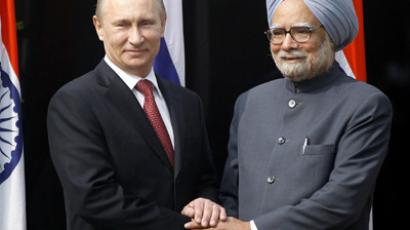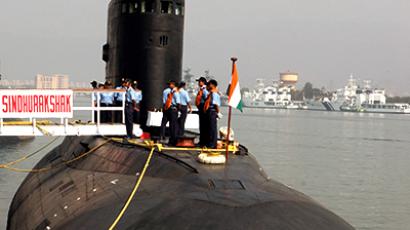Indian divers enter sunken vessel to reach 18 sailors feared dead
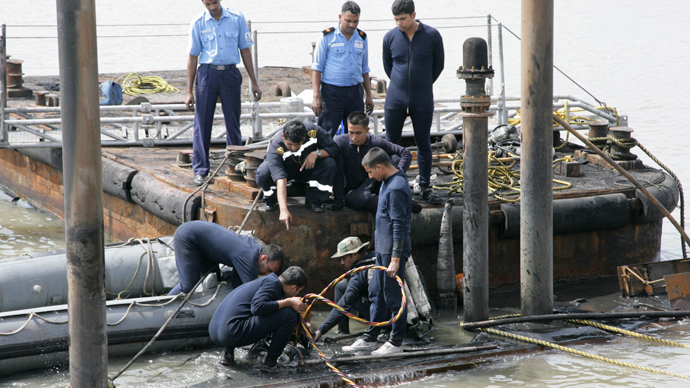
Indian divers have entered a sunken submarine in an effort to reach the 18 sailors feared dead. The Russian company that built the sub, while denying responsibility, says it is ready to assist India in determining the cause of the accident.
An unnamed Indian Navy official told AP that water was being pumped from the flooded submarine so it could be resurfaced. It is currently partially submerged at a dock in a Mumbai naval shipyard, with a portion of the stricken vessel visible above the waterline.
There appeared to be no way the sailors could have survived the intensity of the blasts and fire, the official said.
India’s Defense Ministry said the diesel-powered submarine had
taken on a lot of seawater, hampering visibility. Meanwhile, the
damage caused by the explosion was blocking access to some areas,
making things even worse.
"Trapped personnel have not yet been sighted or
recovered," the ministry said in a statement.
It's believed that the explosions took place in the vessel's
forward section, where torpedoes and missiles are stored.
The accident has cast a cloud over national celebrations marking India’s independence in 1947 from British colonial rule. Prime Minister Manmohan Singh honored those crewmen who perished in the accident. "We pay homage to these martyrs," he said.
Indian authorities have not ruled out foul play as a cause of the blast.
"A board of inquiry will cover the entire spectrum of the incident,” Navy Chief Admiral DK Joshi told reporters early on Wednesday in Mumbai. “We cannot rule out sabotage at this stage, but all the indicators at this point do not support that theory."
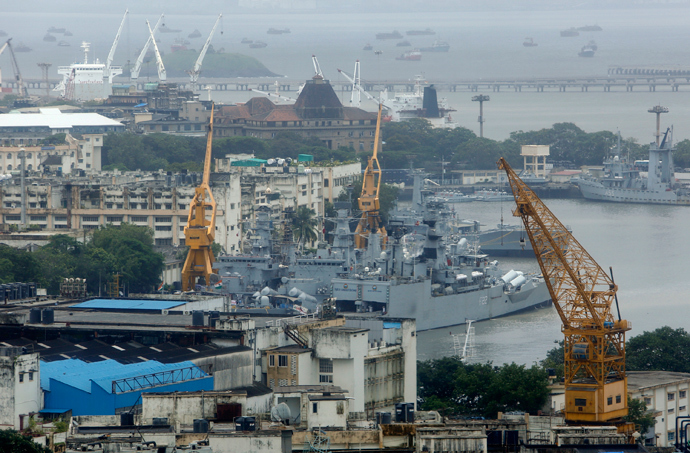
While we hope for the best, we are prepared for the worst, Joshi added.
The explosion on board the Russian-made, diesel-powered INS Sindhurakshak occurred after midnight (18:30 GMT Tuesday). Emergency crews worked four hours to extinguish the blaze. A videotape of the explosions filmed by witnesses showed a massive fire, which forced some sailors to jump into the sea for safety.
Preliminary reports suggest that a fire broke out during the loading of ammunition in the torpedo section, which resulted in an explosion.
The Times of India, quoting sources, said the INS Sindhurakshak is now "a clear write-off."
The 16-year-old submarine was built by the Admiralteiskiye Verfi shipyard in St Petersburg under a contract with the Indian Navy. The submarine, which had been in Severodvinsk for a two-and-a-half year overhaul by the ship repair company Zvyozdochka, returned to Mumbai in January 2013.
Zvyozdochka, which has modernized five diesel electric submarines for the Indian Navy since 1997, said it was ready to help India in ascertaining the cause of the accident, but did not believe it was to blame.
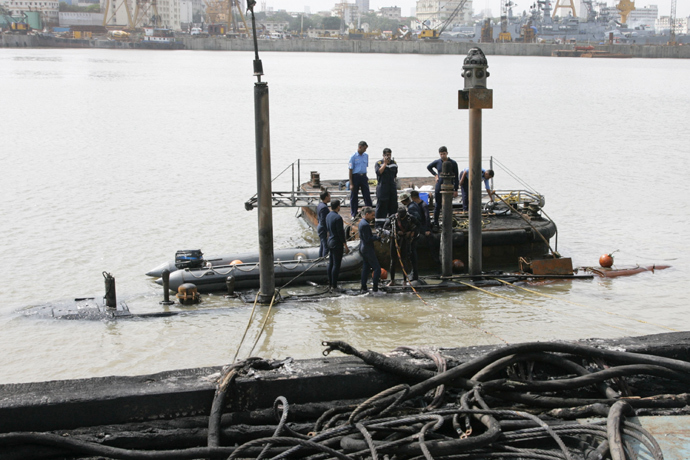
"According to the members of our warranty group, the vessel was functioning properly and had no technical faults at the time of the incident," the Interfax news agency quoted an unidentified company representative as saying.
Zvyozdochka said the submarine, which was one of 10 Russian Kilo-class submarines in India’s navy, had been "in active use" and had logged 24,000 kilometers (15,000 miles) on three missions.
Meanwhile, India’s ongoing restructuring of its military has not been without some setbacks and even scandals.
In February, India put on hold a $750 million deal to buy 12 helicopters from Italian aerospace and defense giant Finmeccanica following allegations that bribes were paid during contract negotiations.
Three of the 12 helicopters were delivered in December and the remaining nine deliveries have been put on hold.
Last year India, which is intent on keeping military pace with China and Pakistan, received a Russian Nerpa nuclear submarine on a 10-year lease at a cost of nearly $1 billion.
Apart from the INS Sindhurakshak, of the 13 other submarines in the Indian navy, as many as 11 are over 20 years old, the Times of India reported.














